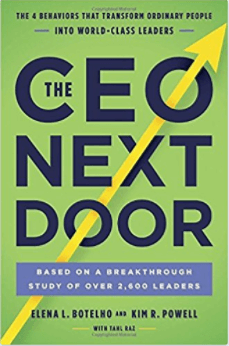Most people believe they get interrupted because that is simply how the interrupting person behaves. In reality, the blame more often lies with the speaker rather than the interrupter. Your listeners may be interrupting you because you take too long to get to the point or because you never pause to let them get a word in edgewise.
Another reason why you may be getting interrupted is due to any distracting behaviors that are over-powering your message. When your body language is inconsistent with your message, your listener is confused with what you are saying. Do they follow your message or what your body language is communicating? You probably can relate to this example. The individual leading a meeting emphasizes how important it is for everyone to stay within the budget to meet the client’s needs yet their posture, facial expressions and voice communicate there really isn’t an emergency.
Build rather than jeopardize your influence Monday to Monday® by applying the following steps during every conversation.
- Get to the point quickly. Oftentimes, the more you say, the more you confuse resulting in frustrating your listeners. As their patience runs out, they interrupt to try to get the information they need from you. Remember, less is more!
- Focus your passion. When we are passionate about a topic, we often feel compelled to tell our listeners everything we know about it. We think our listeners will be as passionate about it as we are. This is rarely true. Share your passion while keeping your message directed to what is important to your listeners.
- Pause. An influential communicator understands that the power of persuasion involves saying less and listening more. When you spend more time listening, you hear what your listener is not saying.
Your listeners are less likely to interrupt when they feel you truly care about what is important to them and what value they will receive when they act on your recommendation.
- Without interaction, the conversation is one-sided. Interaction increases engagement and connection which builds trust.
Interaction also allows you to adapt your message on the fly; another way to communicate to your listeners you care about what is important to them.
- Consider the interruption a gift. An interruption is actually a friendly reminder that you need to get back on track or adapt your message to your listeners’ needs. Take this feedback and run with it.
Drop me a note to share the action steps you took this week to avoid the temptation to interrupt. Tag me on my Facebook page.
What Achievers Read:
The CEO Next Door: The 4 Behaviors That Transform Ordinary People into World-Class Leaders
by Elena L. Botelho, Kim R. Powell and Tahl Raz
This week’s blog is an excerpt from Stacey’s new book, Influence Redefined … Be the Leader You Were Meant to Be, Monday to Monday®. If you’re interested in learning more, contact her at stacey@staceyhankeinc.com
Download our free Ebook – 5 ways weak communication hurts strong businesses





